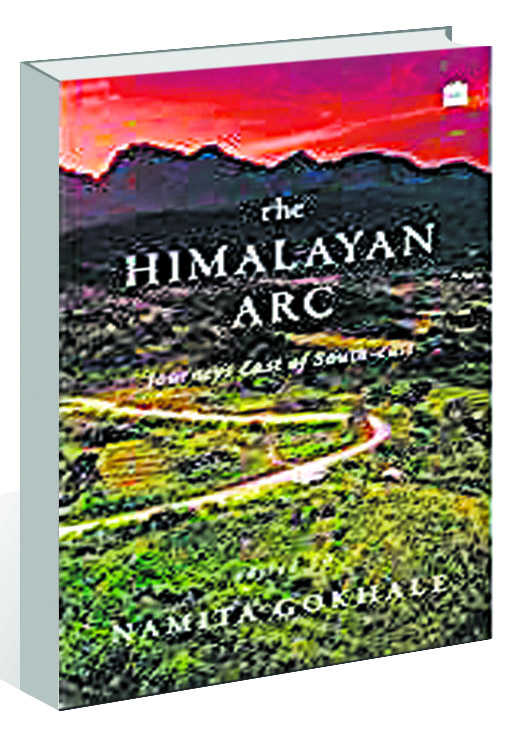
The Himalayan Arc: Journeys East of South–East Ed by Namita Gokhale. HarperCollins. Pages 333. Rs 699
Ratna Raman
The Himalayan Arc is a collection of 29 miscellaneous fictional, personal, poetic, prosaic writings that veer around food, history, landscapes, geographies, persons and places in the Himalayan Arc. Absorbing short stories, memoirs and narratives sketch out differing and different details about lives of people in Dharamsala, Assam, Sikkim, Darjeeling, Mizoram, Nepal, Bhutan and Burma. These have been collected, edited and introduced by Namita Gokhale.
The arc, drawn by the collection, provides a compass through which lives, experiences and histories of the Himalayan world are documented. Accounts of the geography and the beauty of the mountainous terrain are abundantly recounted and documented in nearly all accounts. The shared cultural contexts of the people occupying this section of the Himalayas and indigenous, migratory, military and colonial histories of what are now modern Indian states are traced for us. Factual and fictional accounts acquaint readers with the complexities underlying the less-known sections of Northeast India and their immediate neighbours — Bhutan, Nepal and Myanmar. Occasional typos and poor proof-reading mar what could have been a smooth reading experience.
Gokhale unabashedly declares her affection for the mountains, the hill people, their traditions and way of life. This terrain has been subject to geopolitical change over long stretches of time. Old patterns of living have altered drastically and are being eroded and erased by the speed at which development and political change and modernity, along with attendant technology, have continued to dog these once-pristine sections of the country that also became strategic points of entry and markers of boundary.
Prajwal Parajuly highlights the significant difference in everyday lives in Sikkim and in Darjeeling as a result of the Central’s Government’s intervention, wherein money pumped in, has favoured the former to the detriment of the latter.
Salil Tripathi‘s essay, Pacifist Prisoners and Militaristic Monks, provides an update of Myanmar, telling us about old Yangon and new Naypyidaw and the shift from rule by generals to a parliamentarian rule that ushered in Aung San Suu Kyi. Myanmar’s new political dispensation and its insensitivity to the Rohingyas encapsulates the ugly truth not only about our subcontinent, but also recalls how hierarchies of power have devolved worldwide.
Ma Thida, a physician and political activist, whose long imprisonment is recounted by Tripathi, has a powerful essay, A Fierce Fear, in the book, wherein she speaks of how the State control in Myanmar has bred intolerance, fear and divisiveness among people, eroding their resilience, and allowing them to believe that problems can be solved “only through violent reprisals and social discrimination.” Ma Thida draws attention to how governmental control of media for propaganda has muzzled and censored information and examines its detrimental effects on the psyche of the Burmans. Ma Thida’s conviction that communication and free interaction between people alone can generate pluralism offers invaluable input in the context of contemporary India as well.
Civilisational progress, measured not by GDP (Gross Domestic Product) but by Gross National Happiness, (GNH) Bhutan’s contribution to the world, documented by John Elliott, has now gained international acceptance. Despite its rich cultural diversity and ancient history, India continues to have a low GNH ranking. We need to access and enable the multiplicity of histories, habits and cultural practices that sustain not only the Himalayan Arc, but also the rest of the subcontinent, which has been a melting pot of diverse traditions through the ages. Let us engage extensively with our stories and multiple narratives and assimilate them in order to journey towards heavens of possibility and freedom.



























